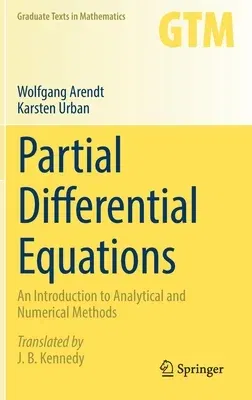This textbook introduces the study of partial differential equations
using both analytical and numerical methods. By intertwining the two
complementary approaches, the authors create an ideal foundation for
further study. Motivating examples from the physical sciences,
engineering, and economics complete this integrated approach.
A showcase of models begins the book, demonstrating how PDEs arise in
practical problems that involve heat, vibration, fluid flow, and
financial markets. Several important characterizing properties are used
to classify mathematical similarities, then elementary methods are used
to solve examples of hyperbolic, elliptic, and parabolic equations. From
here, an accessible introduction to Hilbert spaces and the spectral
theorem lay the foundation for advanced methods. Sobolev spaces are
presented first in dimension one, before being extended to arbitrary
dimension for the study of elliptic equations. An extensive chapter on
numerical methods focuses on finite difference and finite element
methods. Computer-aided calculation with Maple(TM) completes the book.
Throughout, three fundamental examples are studied with different tools:
Poisson's equation, the heat equation, and the wave equation on
Euclidean domains. The Black-Scholes equation from mathematical finance
is one of several opportunities for extension.
Partial Differential Equations offers an innovative introduction for
students new to the area. Analytical and numerical tools combine with
modeling to form a versatile toolbox for further study in pure or
applied mathematics. Illuminating illustrations and engaging exercises
accompany the text throughout. Courses in real analysis and linear
algebra at the upper-undergraduate level are assumed.

